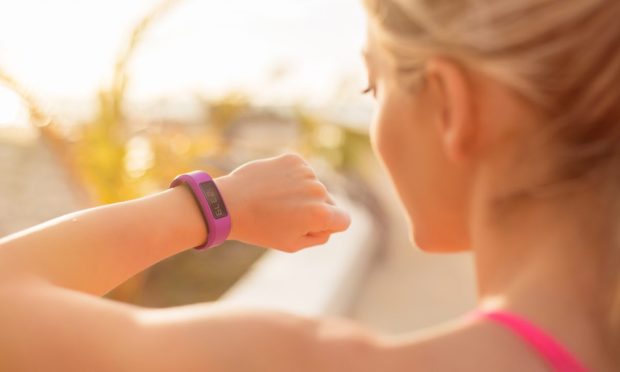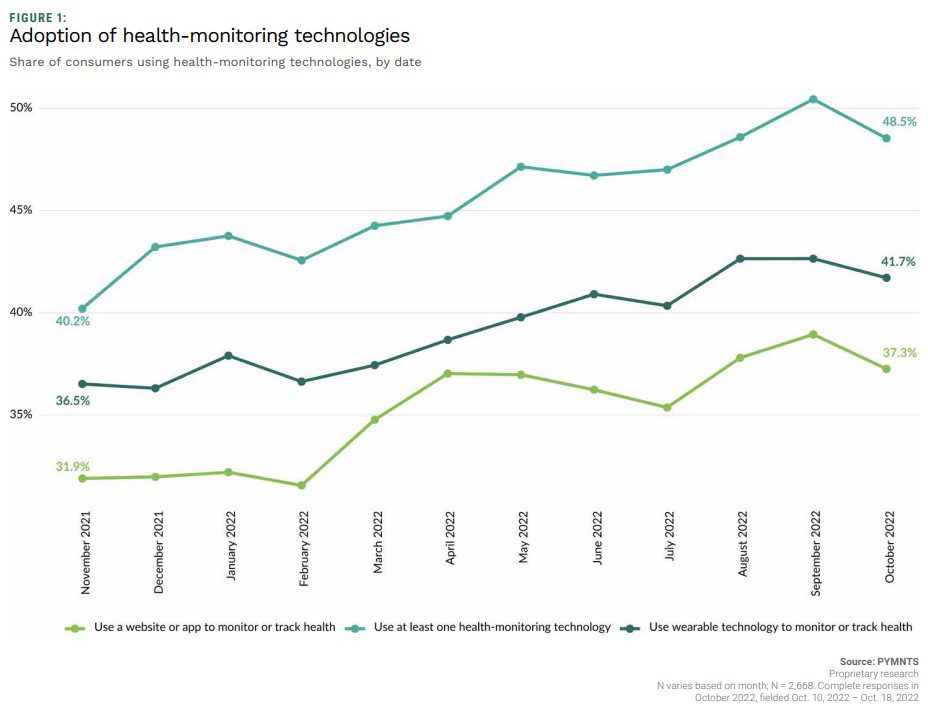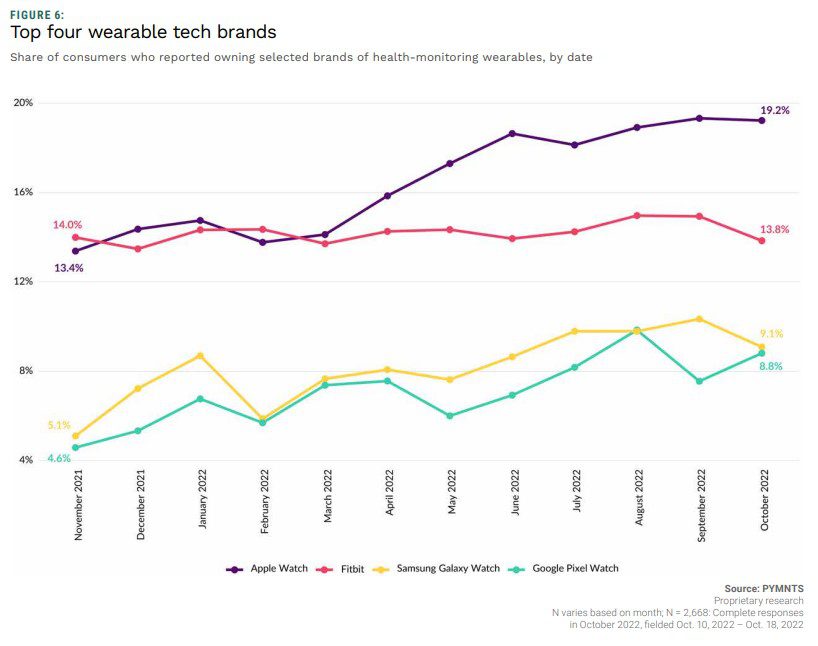New Data Shows Wellness Is Leading the Way on Wearables

Wellness and wearables go together like watches and wrists, like rings and fingers, but they’re far more than digital status symbols. Wellness is bringing out the true utility of these trendy devices as innovation in the wearables space shows, borne out by new research.
Analyzing the adoption of digital fashions for tracking health in the past year, PYMNTS surveyed nearly 2,670 consumers on their use of connected devices for wellness, and to see which brands and form factors are getting consumers deeper into self-directed health monitoring.
In “Connected Wellness: Tracking The Rise Of Health-Tracking Technology,” a PYMNTS report with research sponsored by CareCredit, we found that almost 108 million consumers are using wearables to some extent “to keep tabs on their health, and their numbers are growing — especially among millennials, Generation Z and consumers living in urban areas.”
According to the study, “96.5 million consumers used a device, app or website to track their health or vitals at least once in October 2022, and more are beginning to try such devices every day. The use of health-tracking technologies has grown by 21%, a projected 21 million more U.S. consumers, since November 2021.”

Watching Your Wellness
That study dropped as holiday shopping was getting fierce, and with the top health-tracking wearables — Apple Watch, Fitbit, Google Pixel Watch, and the Samsung Galaxy Watch — all turning up the volume on device utility ahead of a stressful 2022 shopping season.
In early November, Apple blogged about its integration with prescription digital therapeutic Nightware, which monitors users during sleep and can help mitigate the effects of traumatic nightmares for military veterans and others whose PTSD robs them of restful sleep.
Heart monitoring is another key area for wearables, with Apple, Samsung, and Google all introducing features to track heart health and blood pressure.
With its summer release of the Galaxy Watch5, Samsung noted the device contains Samsung’s BioActive Sensor using “a single unique chip that combines three powerful health sensors — Optical Heart Rate, Electrical Heart Signal, and Bioelectrical Impedance Analysis — to deliver extensive readings that include heart rate, blood oxygen level, and even stress level.”
In October, Google announced that its latest Google Pixel Watch can “detect signs of atrial fibrillation (AFib) with an ECG app, get a better night’s rest with Sleep Score and Sleep Stages, and get insights into key metrics like your breathing rate, heart rate variability, and more — all on the Health Metrics Dashboard in the Fitbit app.”
Fitbit focused on its uses to assist with “mindfulness” in a November blog, saying that, “There is growing evidence that even brief mindfulness can have positive, sustained effects on resilience, perceived stress, heart rate variability, and focus,” adding “with this in mind, we wanted to take a look at, and begin to understand, the health impact of Fitbit’s stress management tools.” That resulted in a fascinating study on relaxation and mindfulness activities (RAMA).
The “Connected Wellness: Tracking The Rise Of Health-Tracking Technology” study shows that Apple Watch and Fitbit are the closest competitors, noting that 19% of the adult population, “a projected 49.6 million people, owned an Apple Watch in October 2022, compared to 13% in November 2021 — far and away more than any other wearable technology. The next-most common wearable is a Fitbit, which 14% of consumers in the U.S. own.”

Get the Study: Connected Wellness: Tracking The Rise Of Health-Tracking Technology